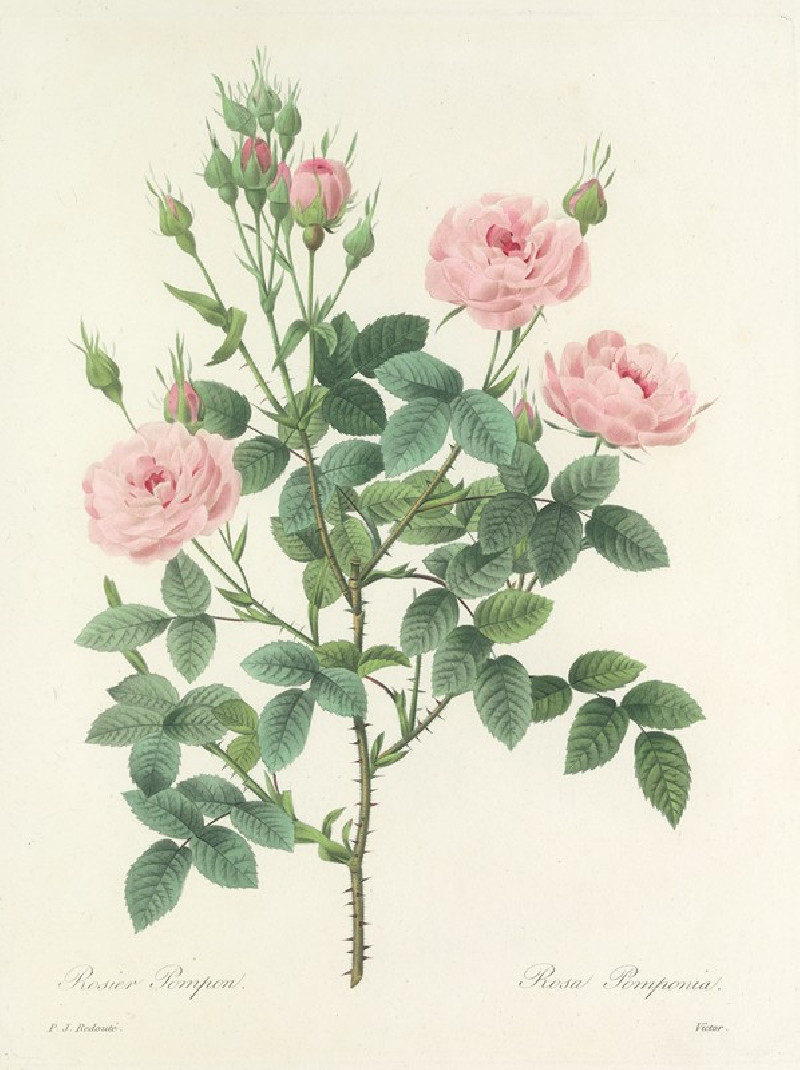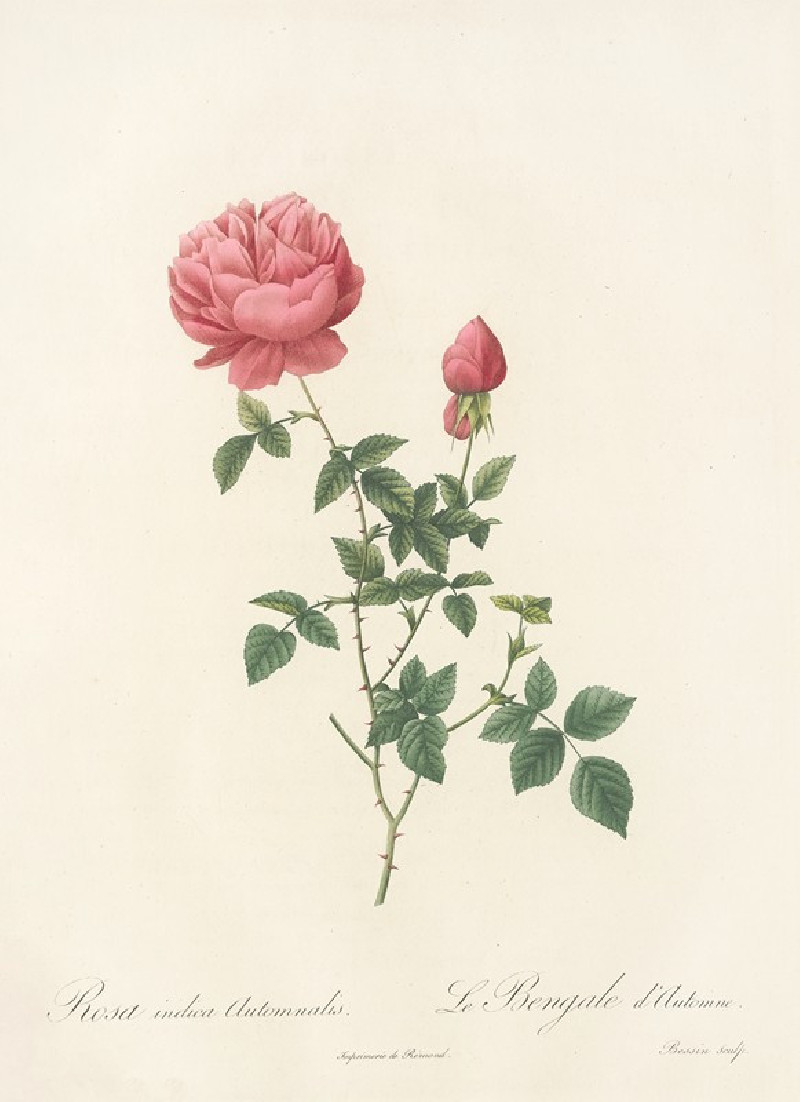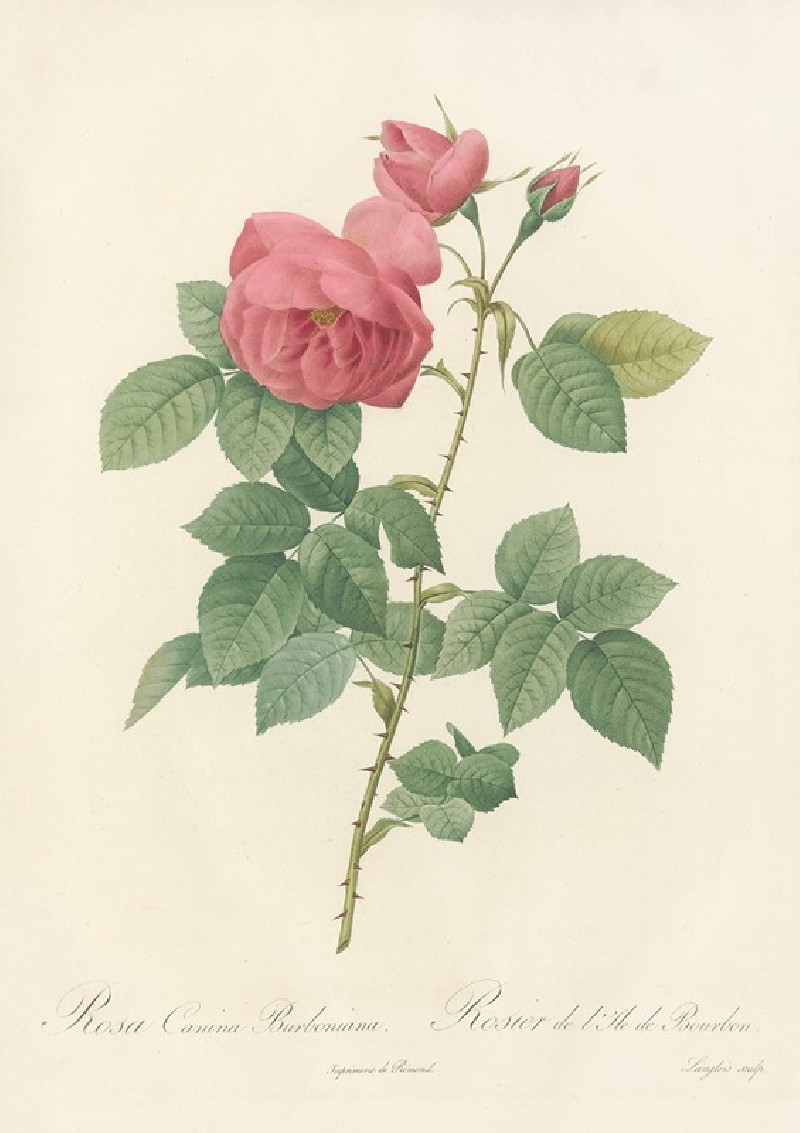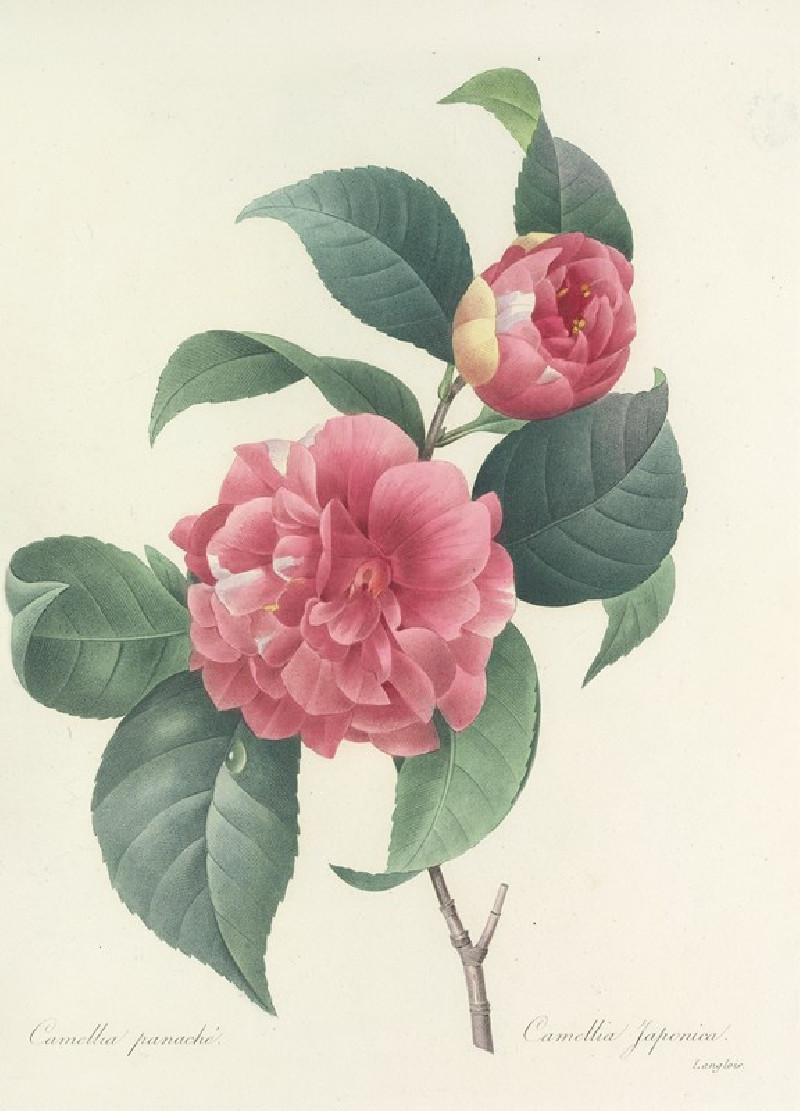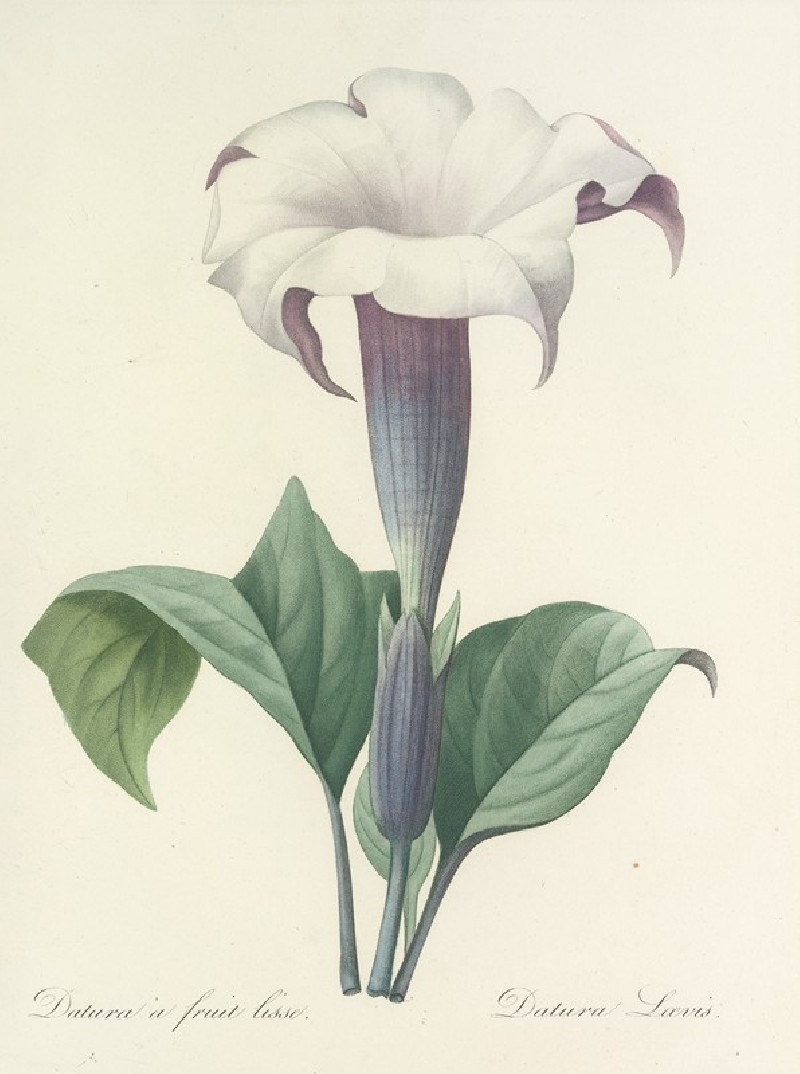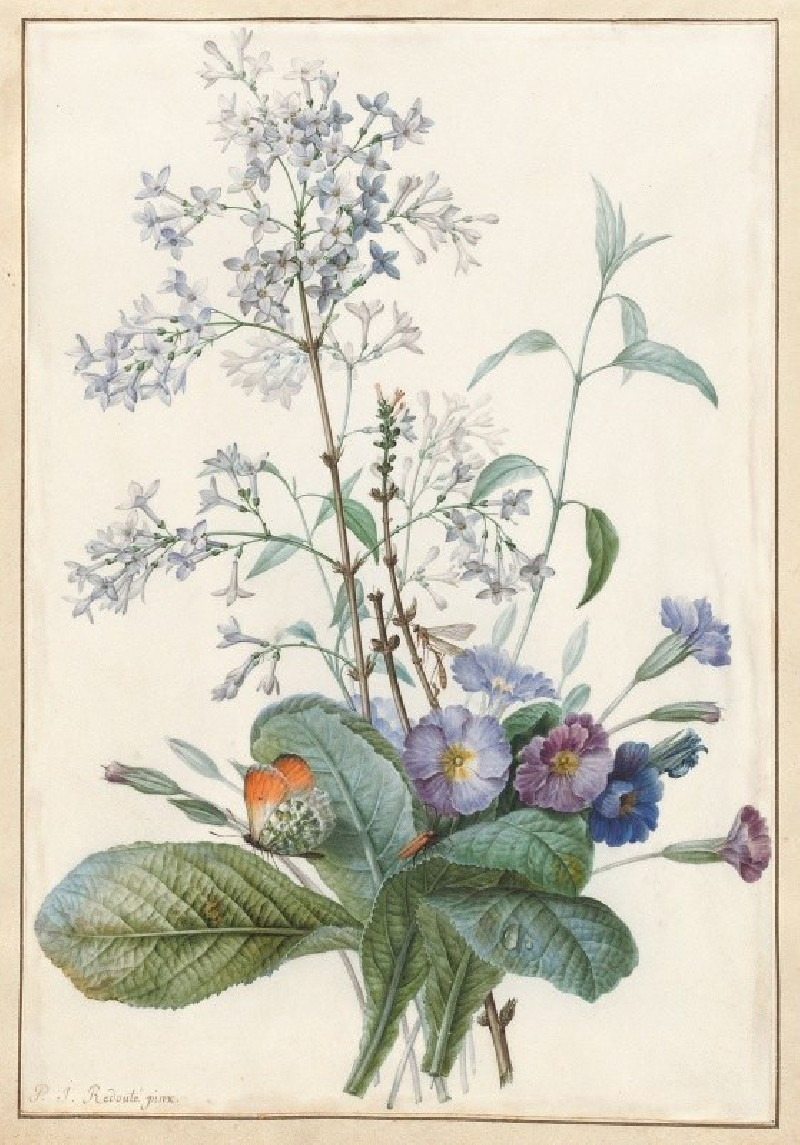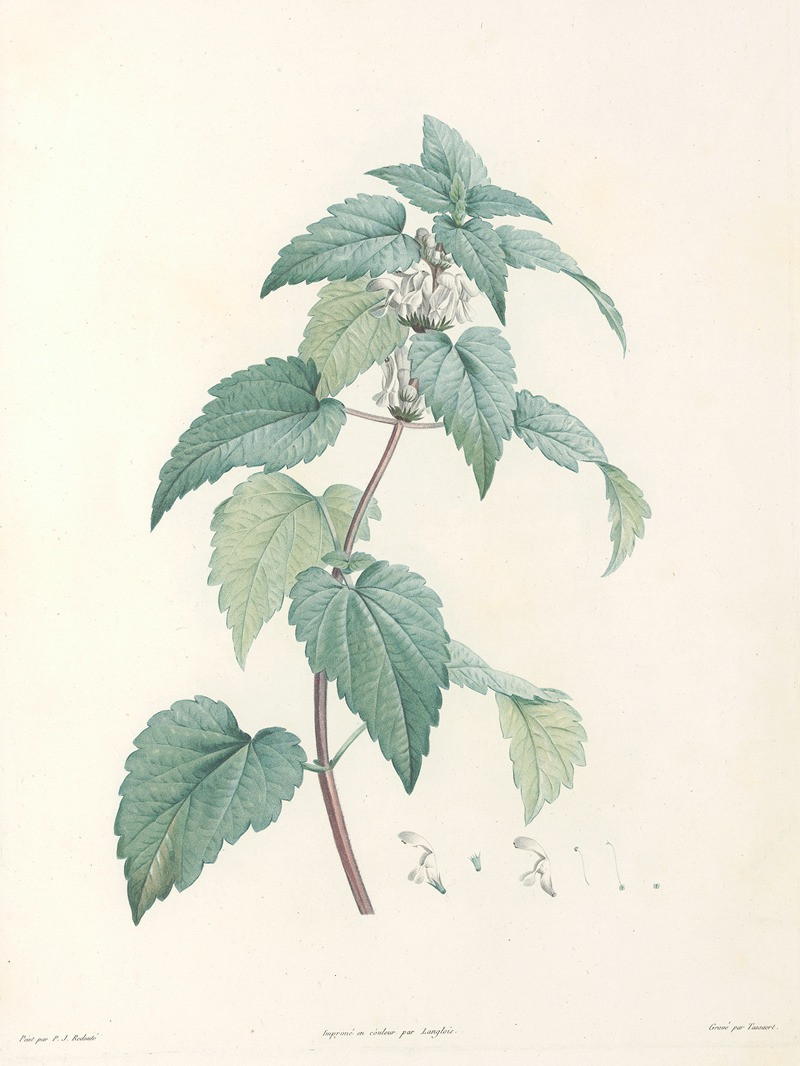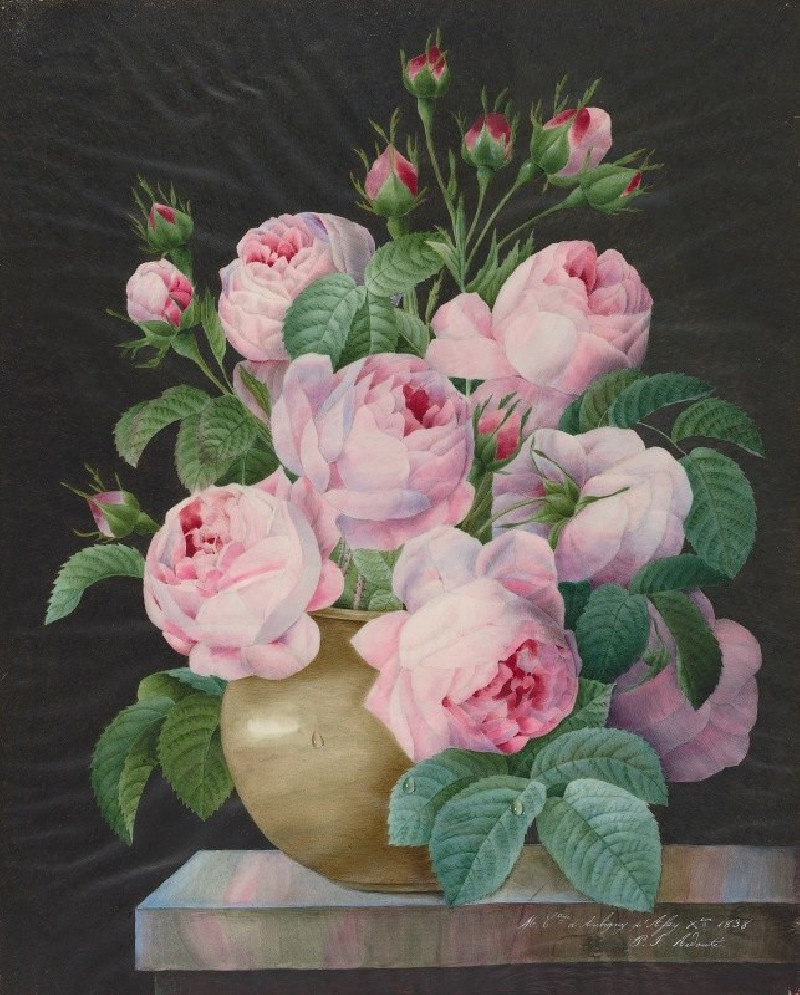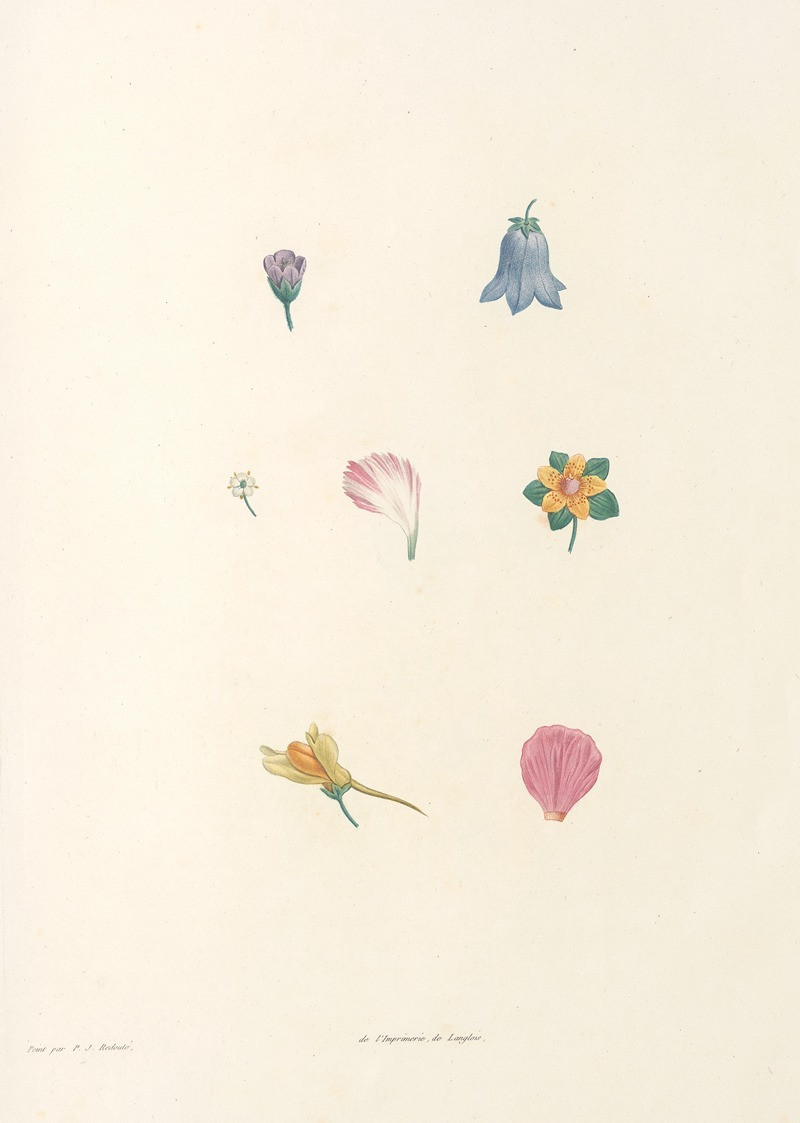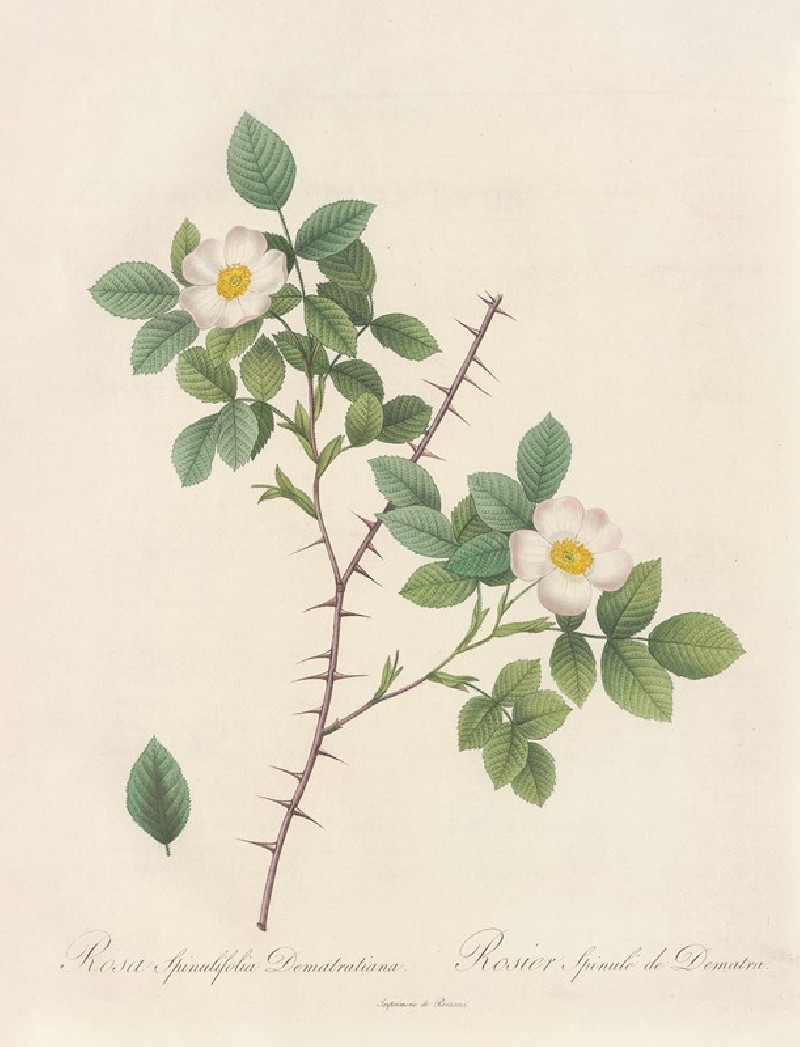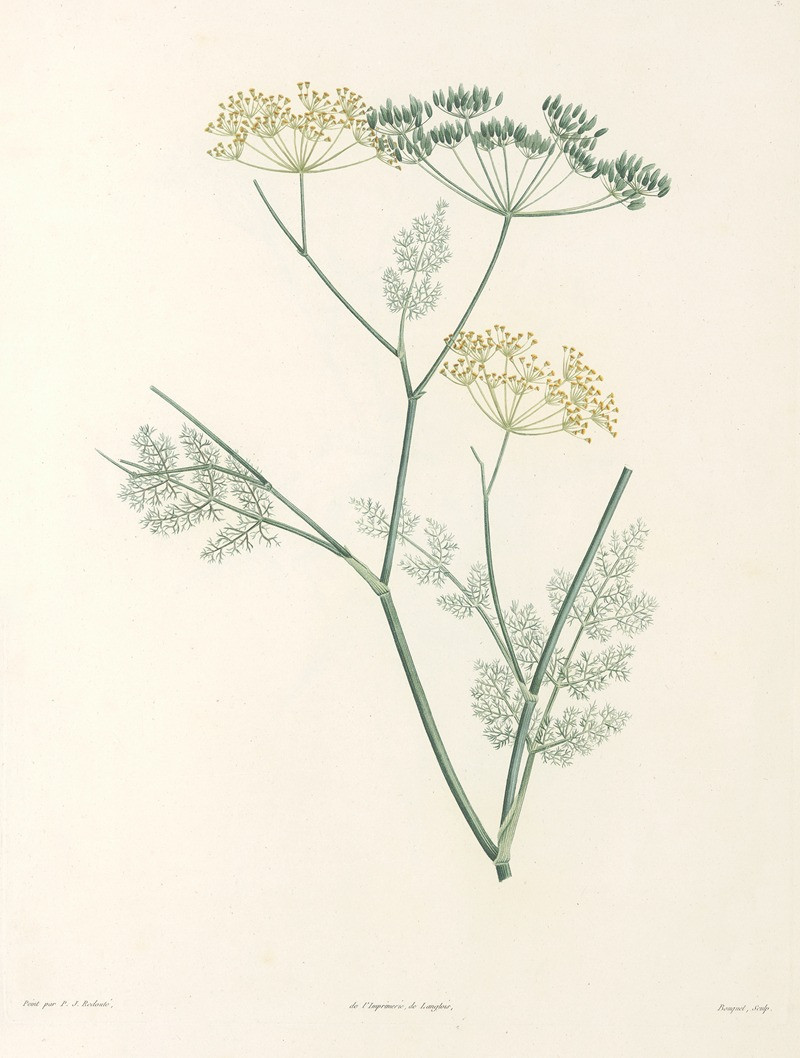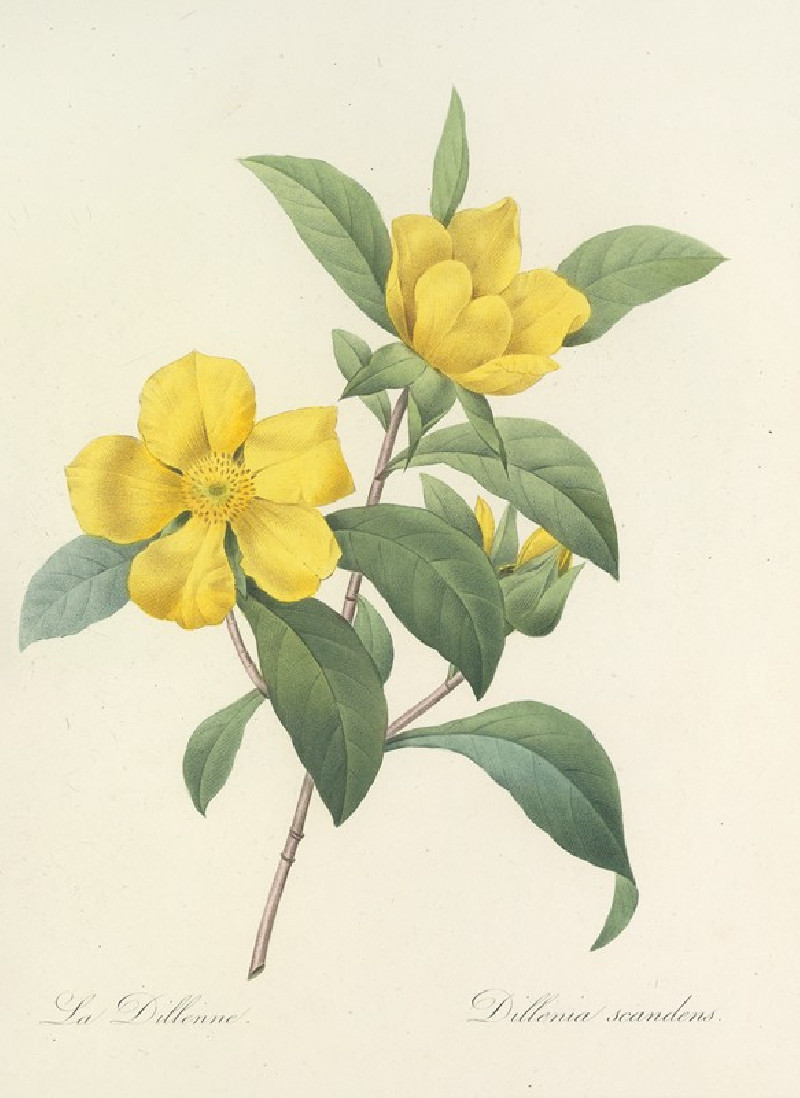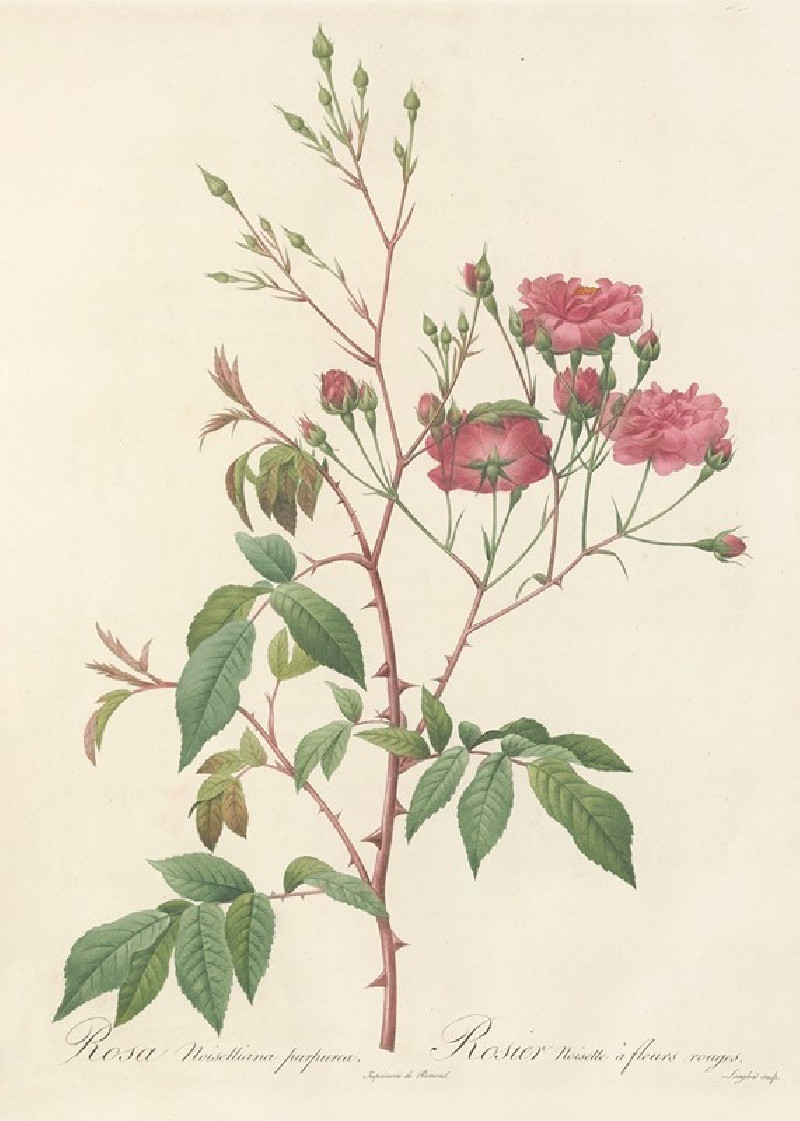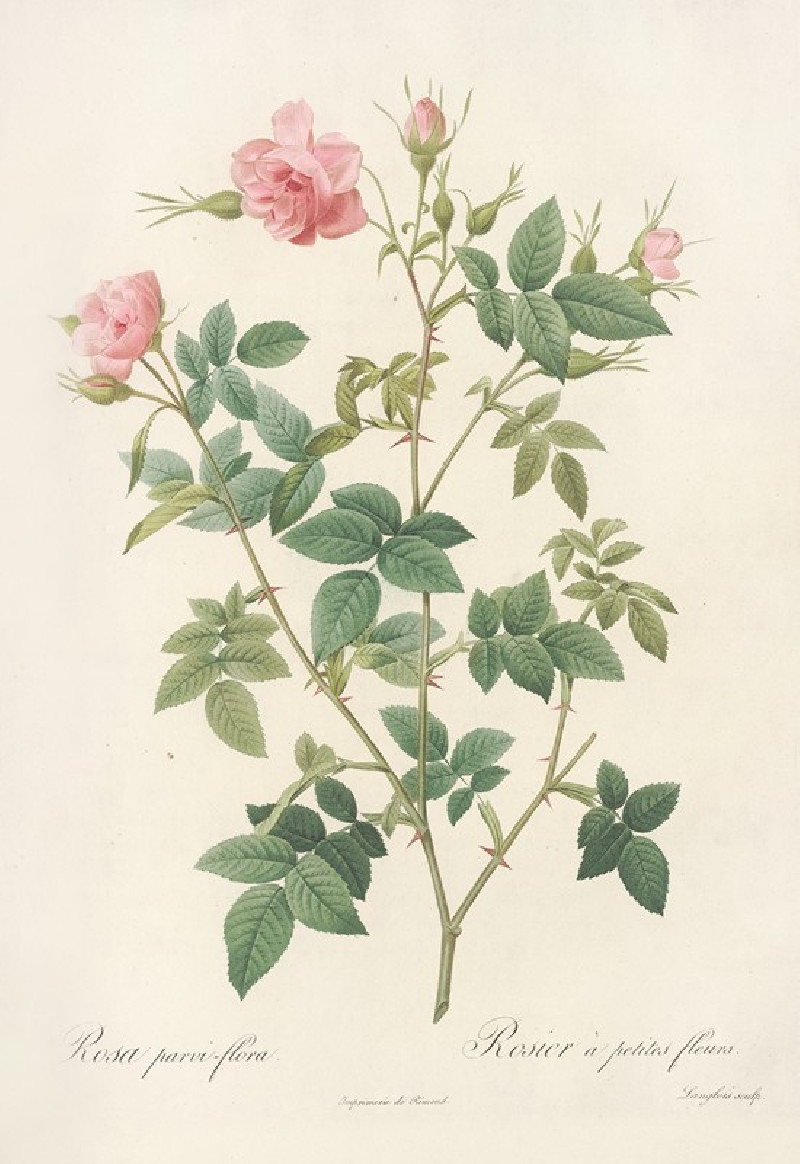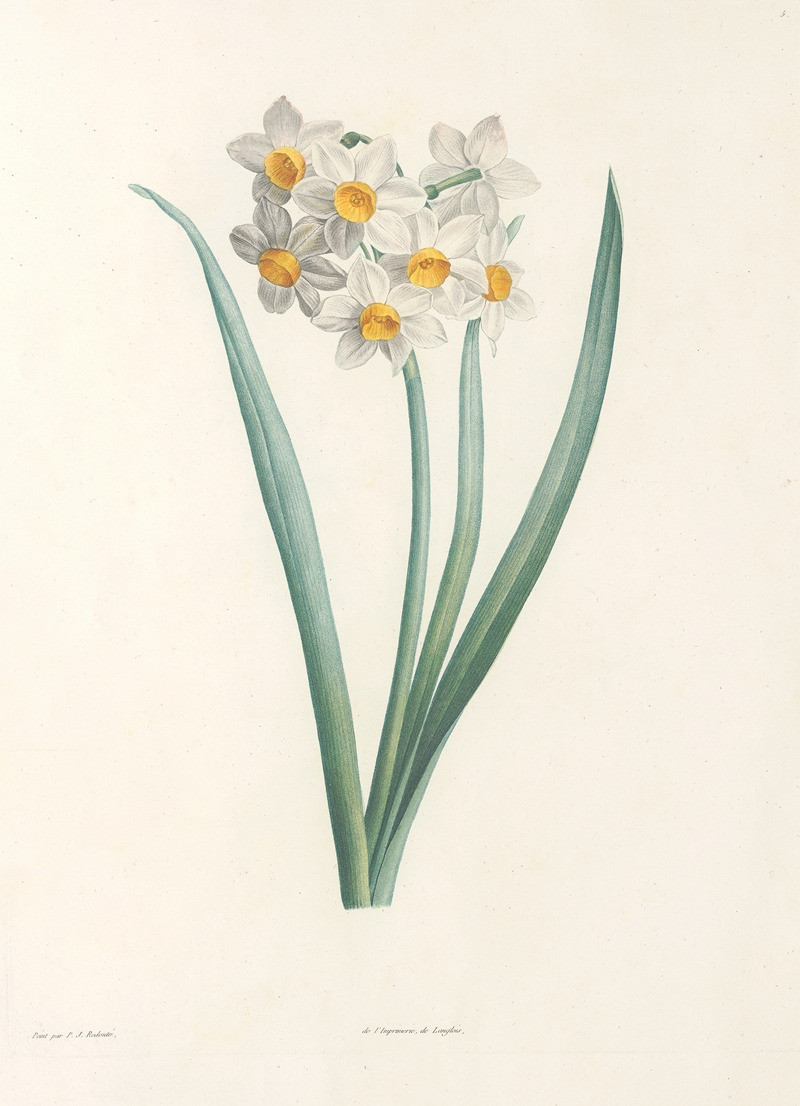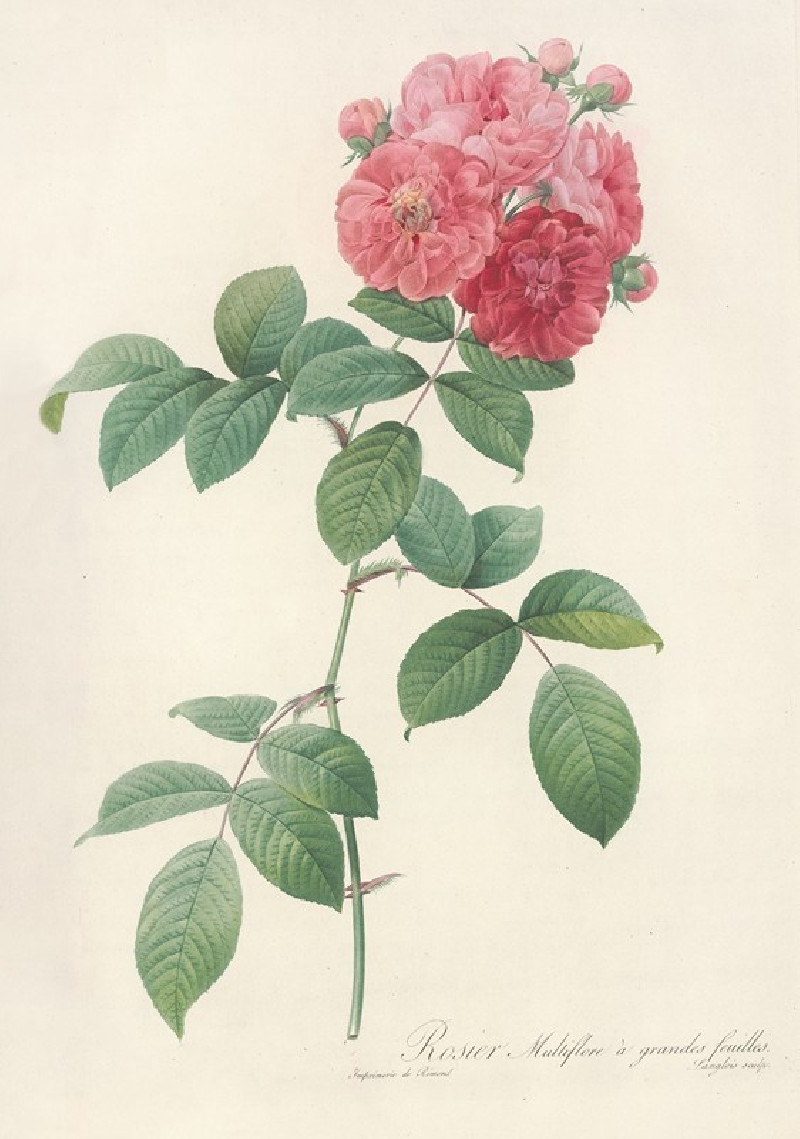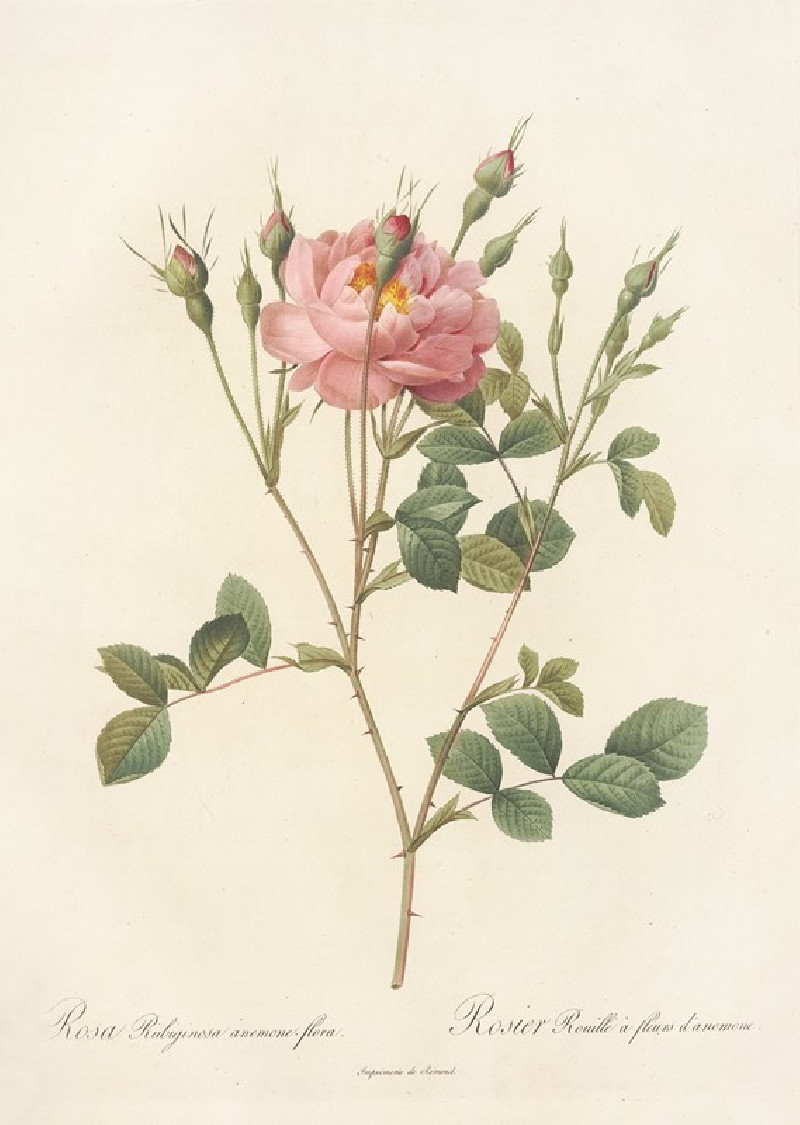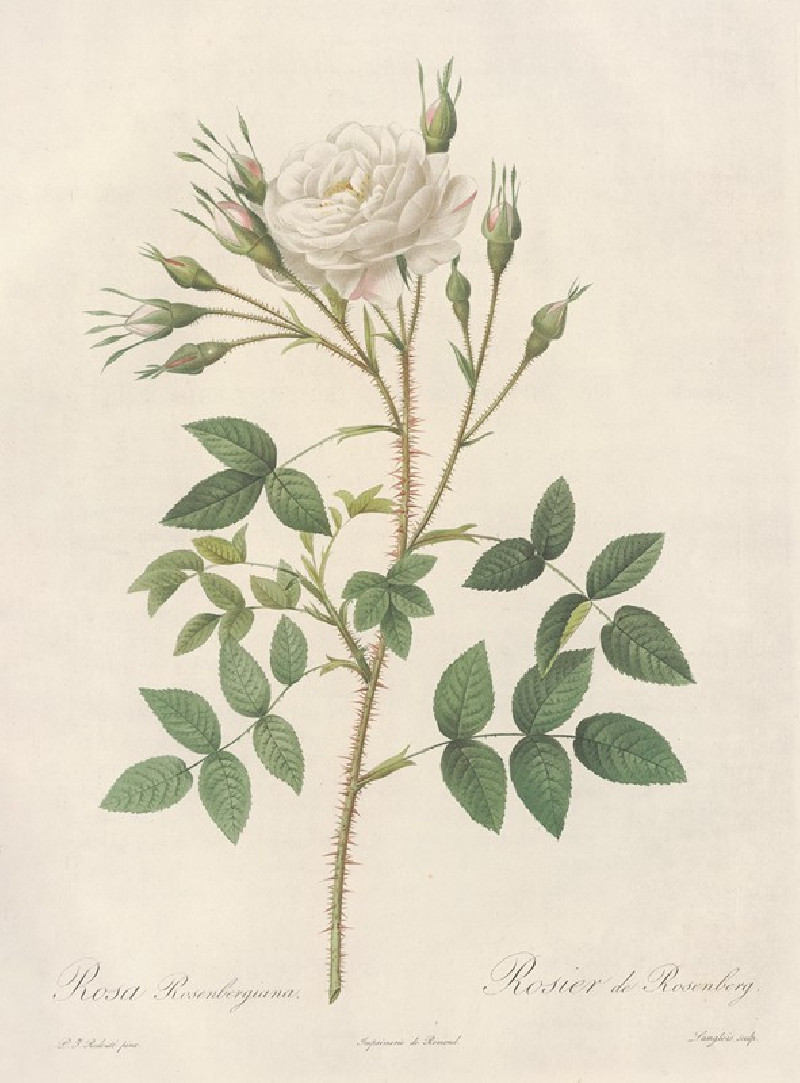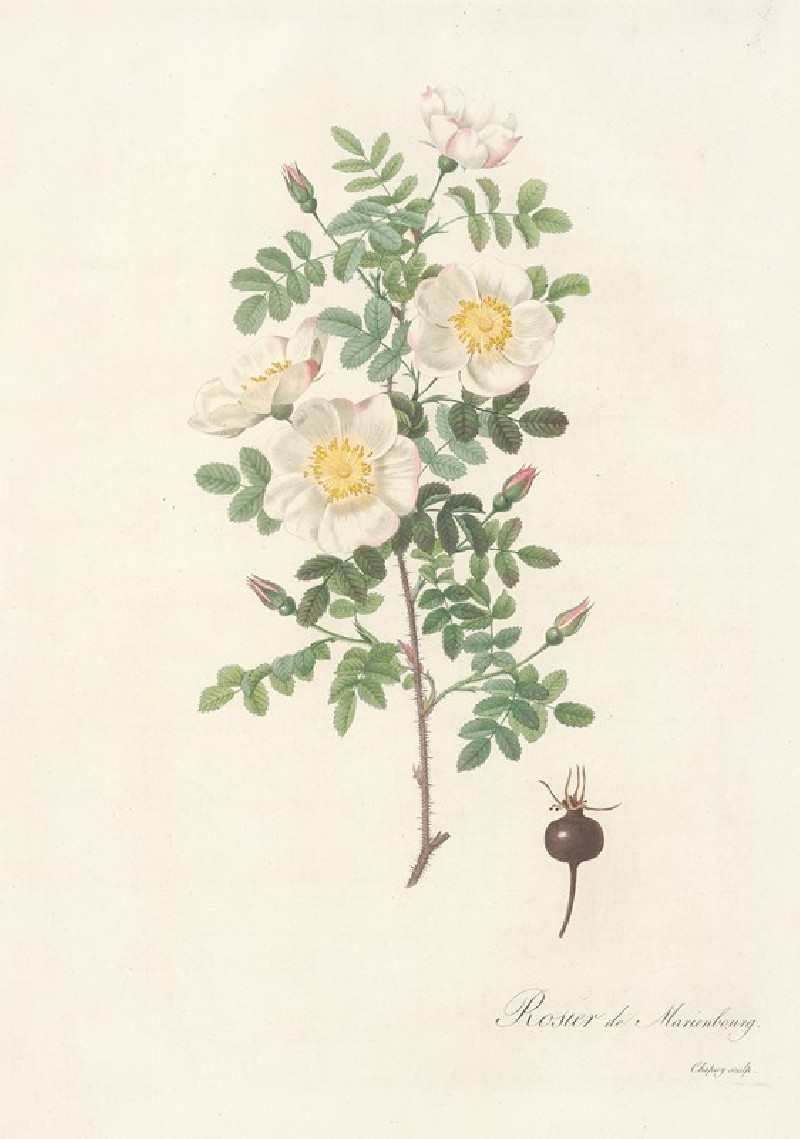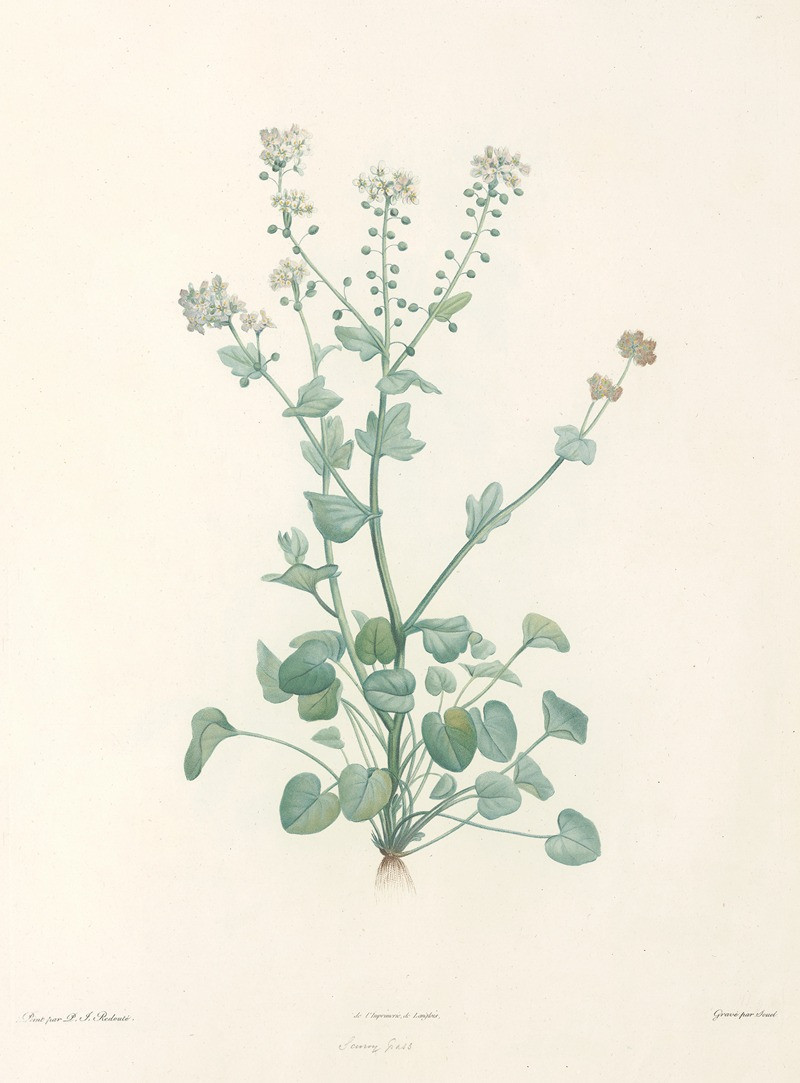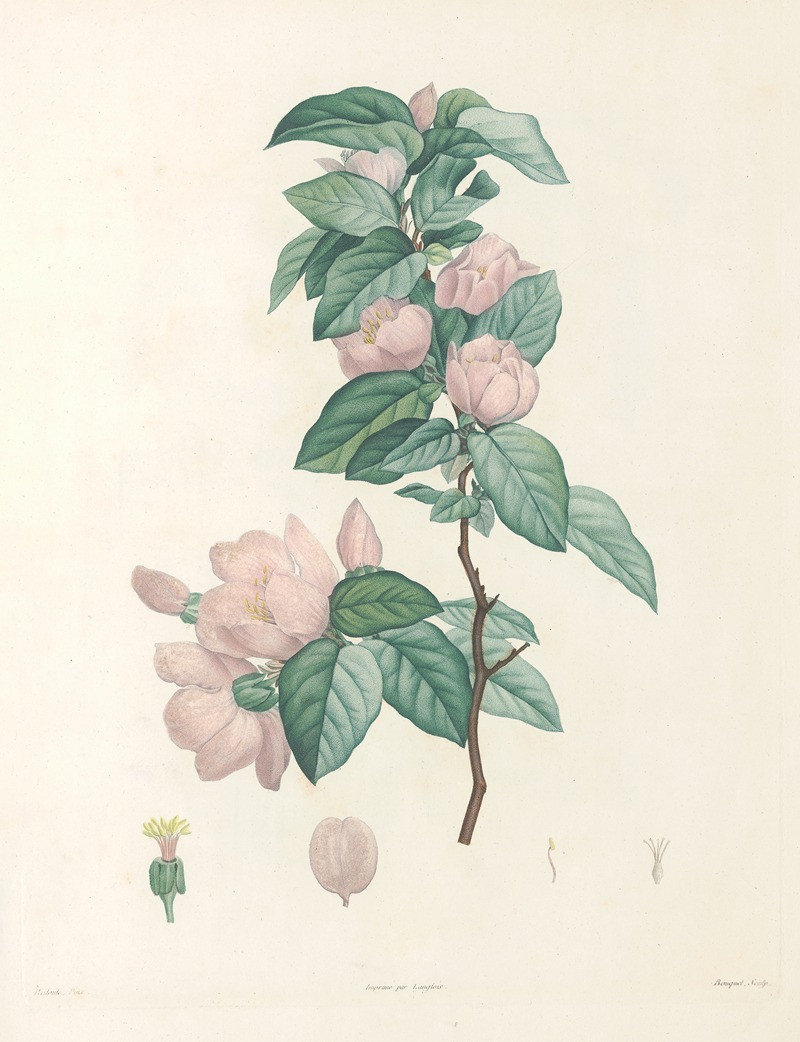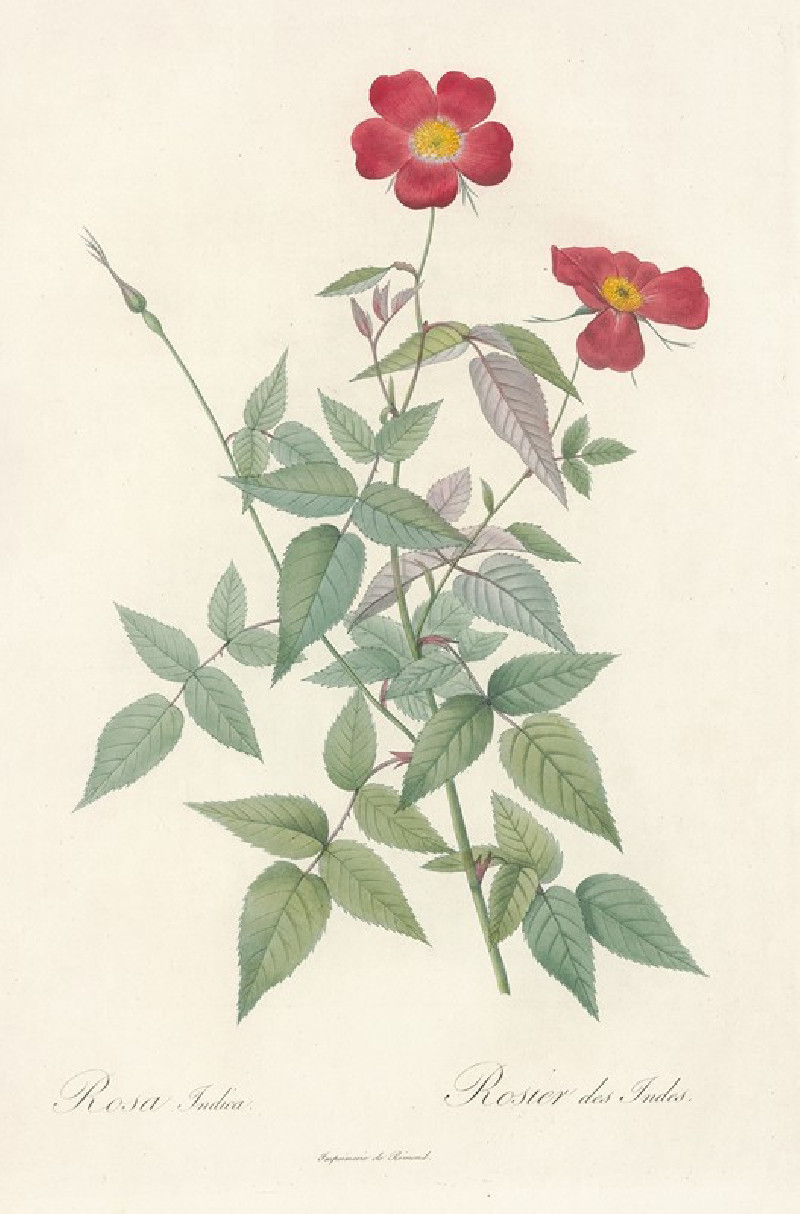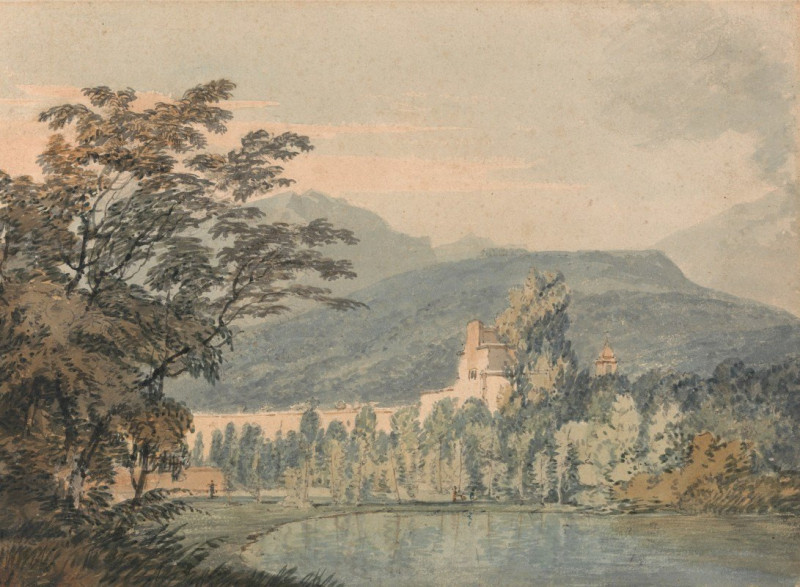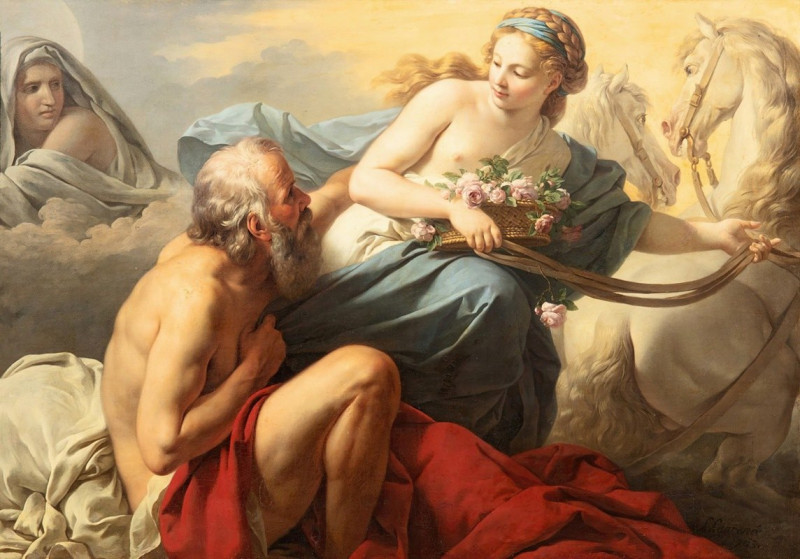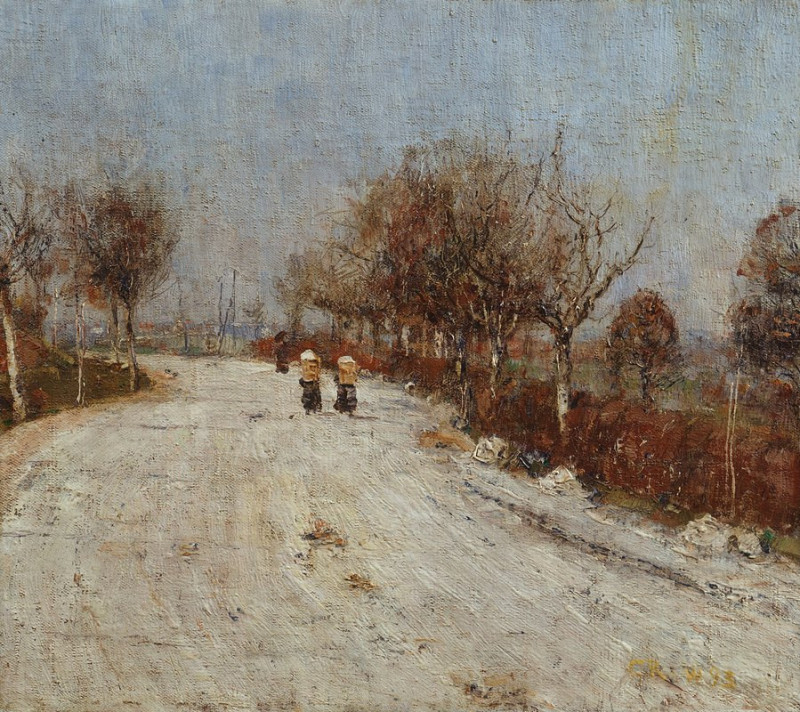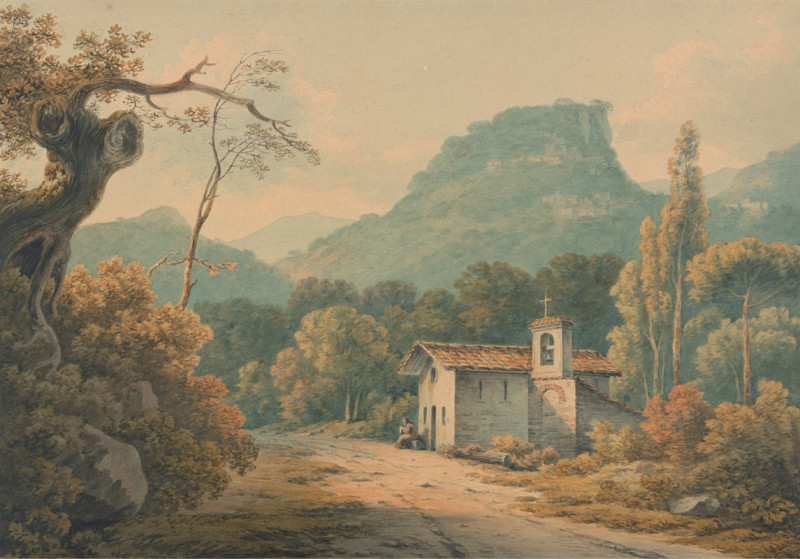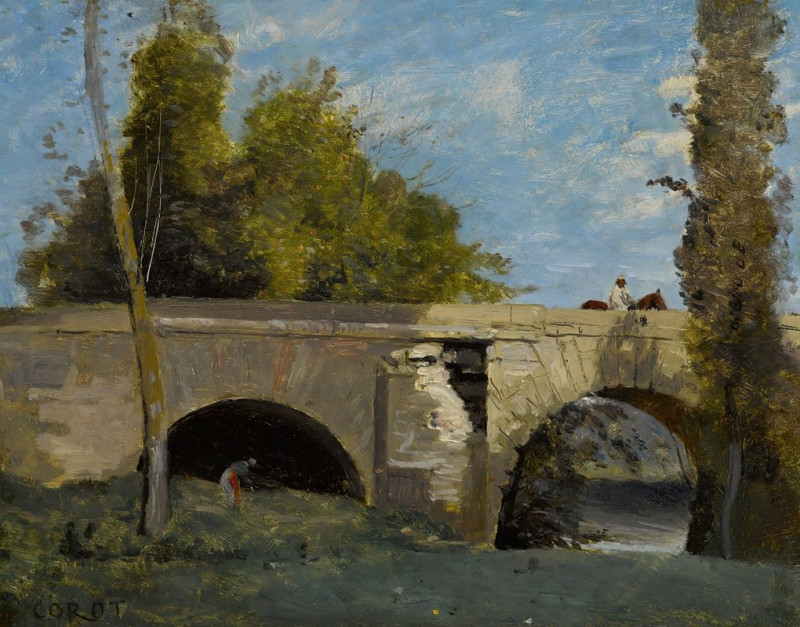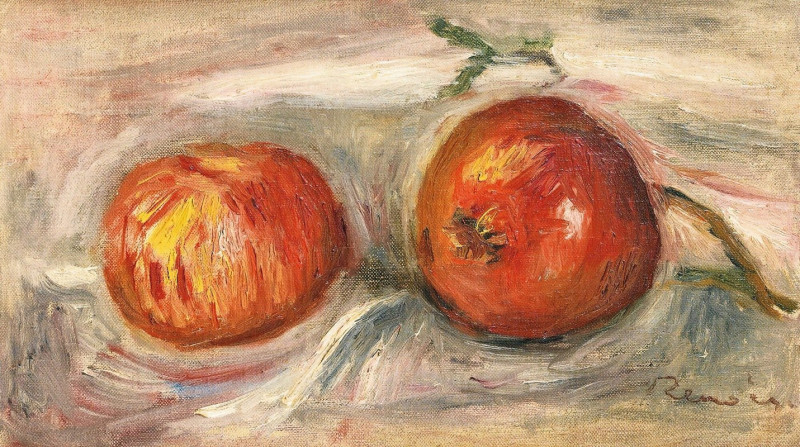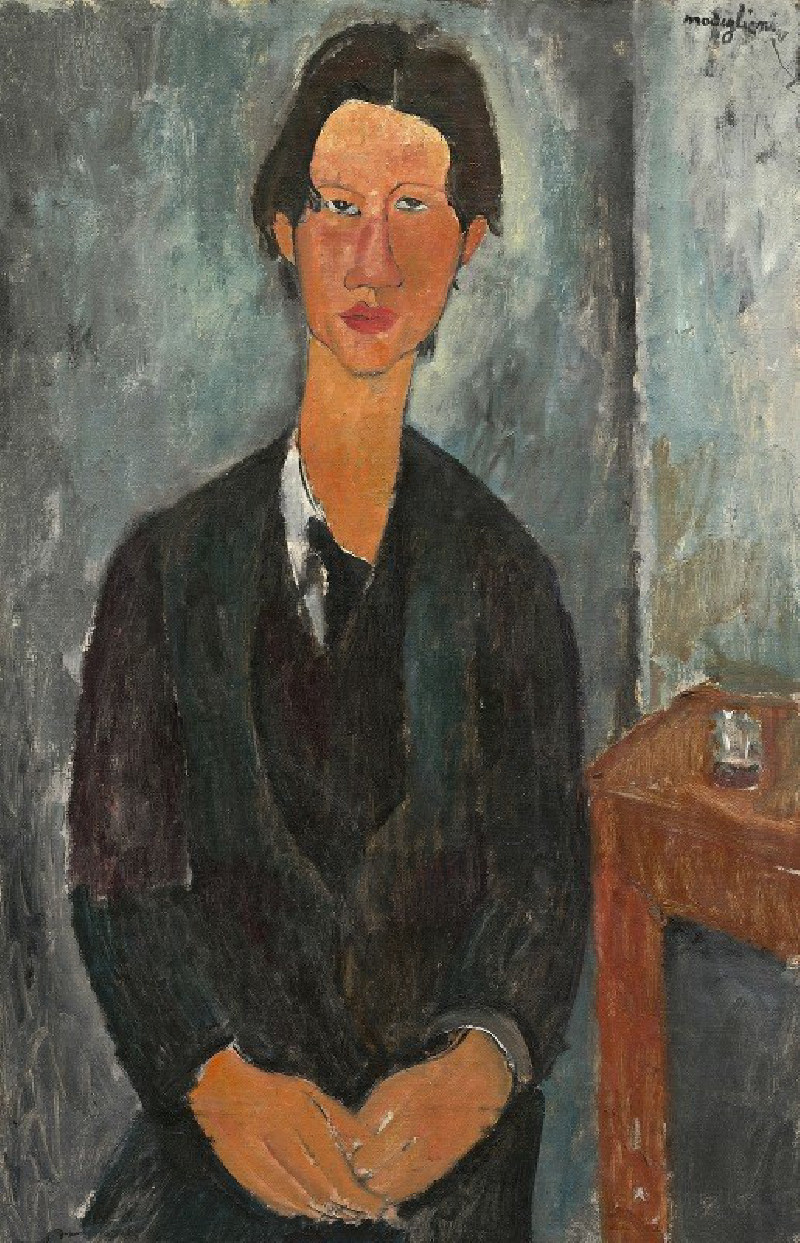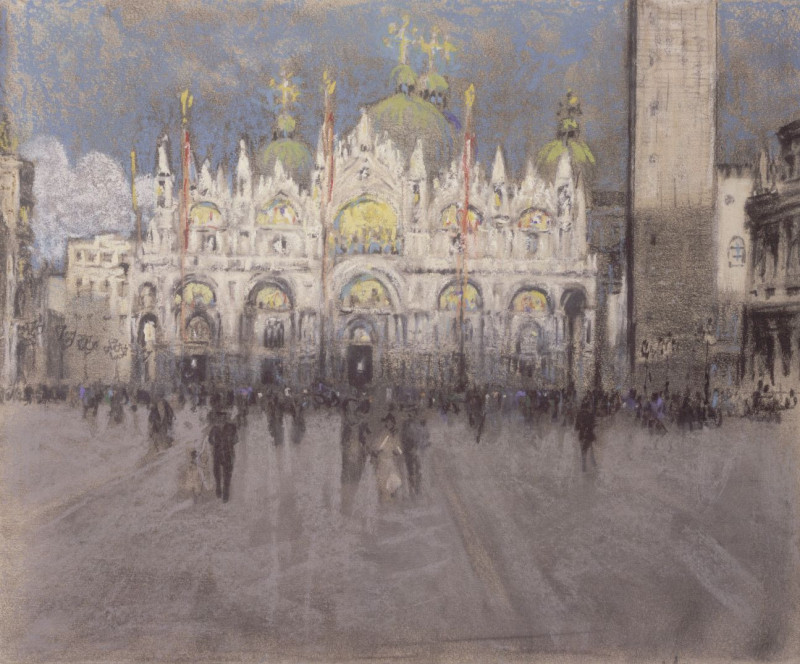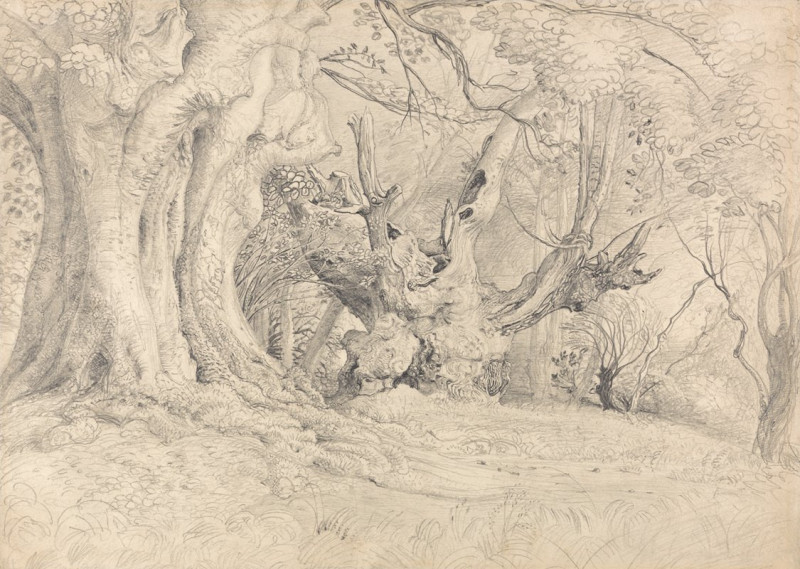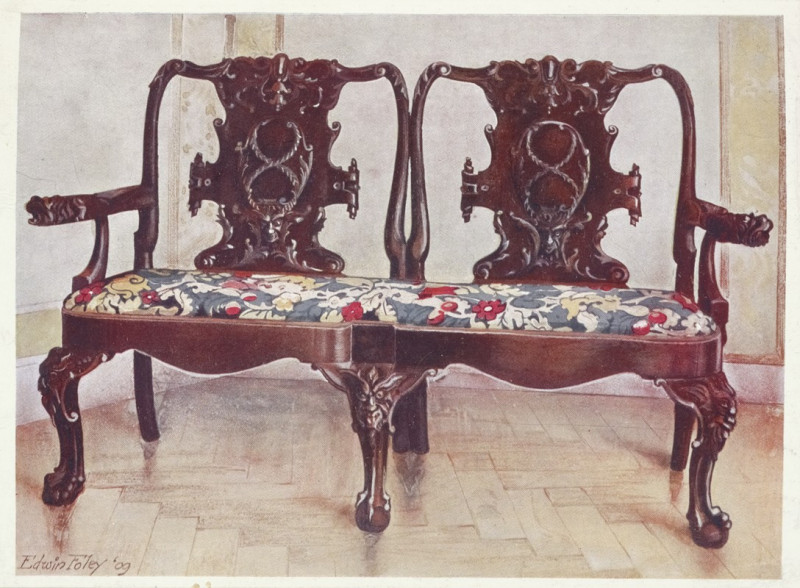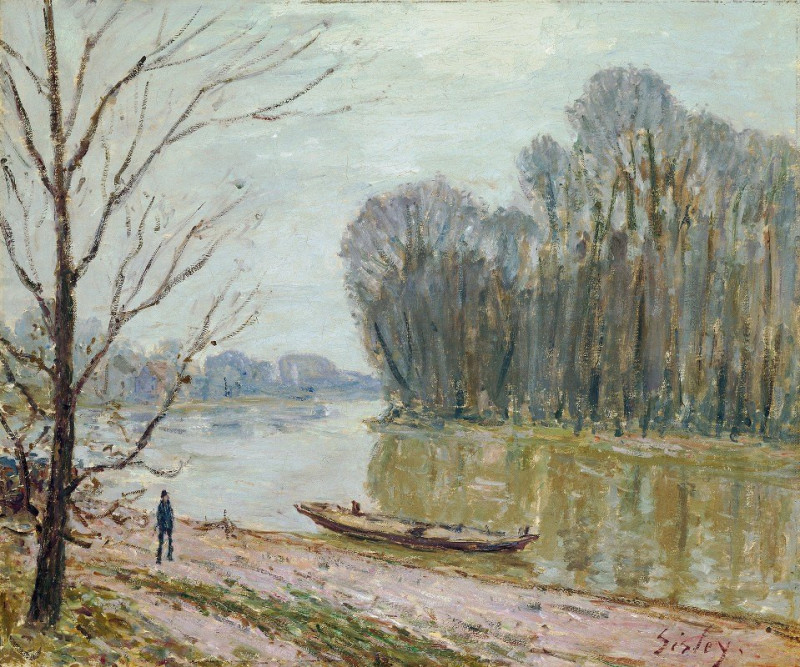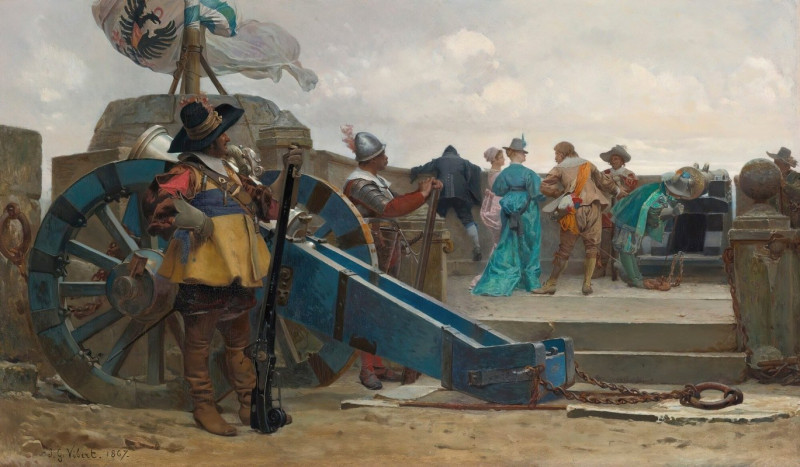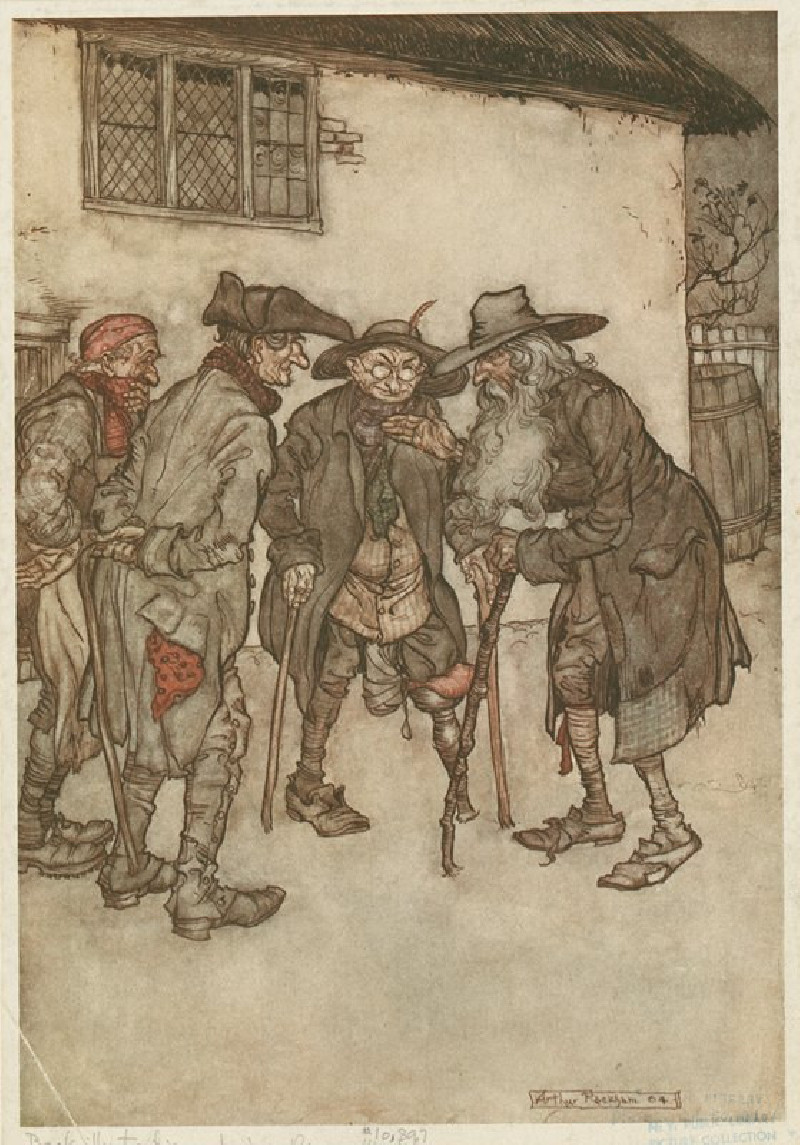Choix des plus belles fleurs pl 101 (1827)
Technique: Giclée quality print
Recommended by our customers
More about this artwork
We are delighted to present a remarkable work from the collection "Choix des plus belles fleurs," specifically plate 101, crafted by the renowned botanical artist Pierre Joseph Redouté in 1827. This exquisite painting features the 'Rosa Pomponia', known commonly as the pompon rose, portraying its delicate beauty with an almost scientific precision.Redouté's mastery in botanical illustration is vividly showcased in this print, where every petal and leaf is detailed with intricate brushwork. The composition displays a stem of the Rosa Pomponia adorned with lavish pink blooms and tender buds poised to blossom. The soft pinks of the flowers are contrasted beautifully against the lush green of the leaves, creating a visual experience of serene natural beauty. The artwork not only captures the aesthetic appeal of the pompon rose but also serves as an important historical record of botanical art.This painting is a testament to Redouté's skill as an artist and his deep understanding of botany, making it a valuable piece for both art enthusiasts and botanical scholars.
Delivery
Returns
Pierre-Joseph Redouté, was a painter and botanist from Belgium, known for his watercolours of roses, lilies and other flowers at Malmaison, many of which were published as large, color stipple engravings. He was nicknamed "the Raphael of flowers" and has been called the greatest botanical illustrator of all time.

